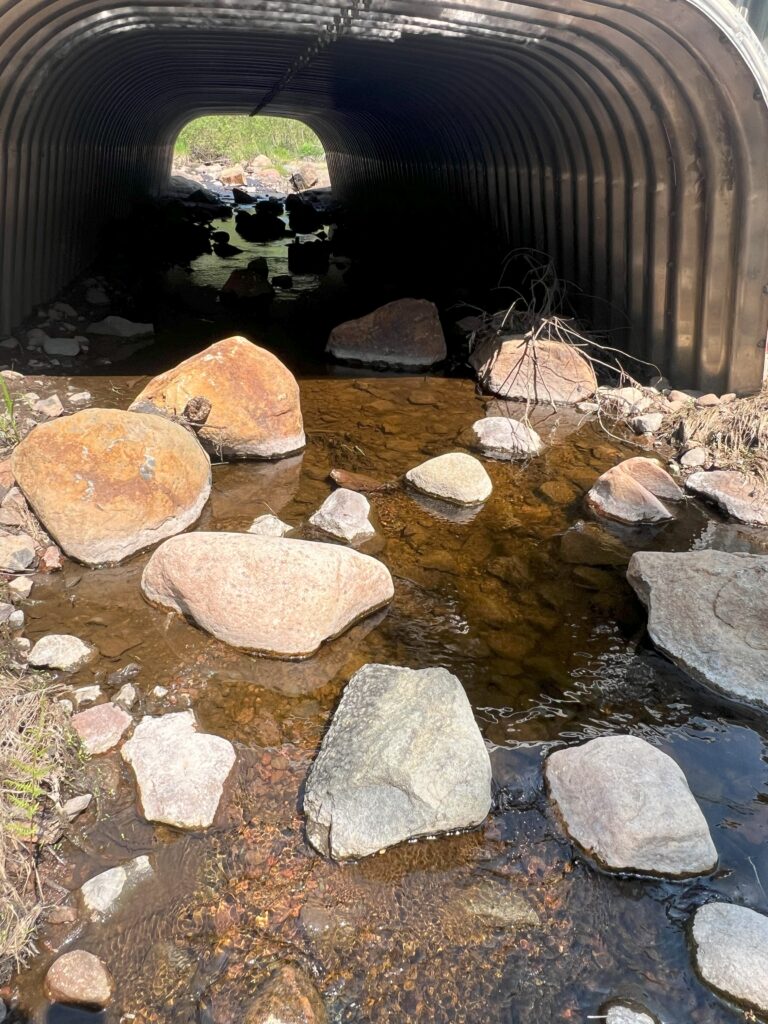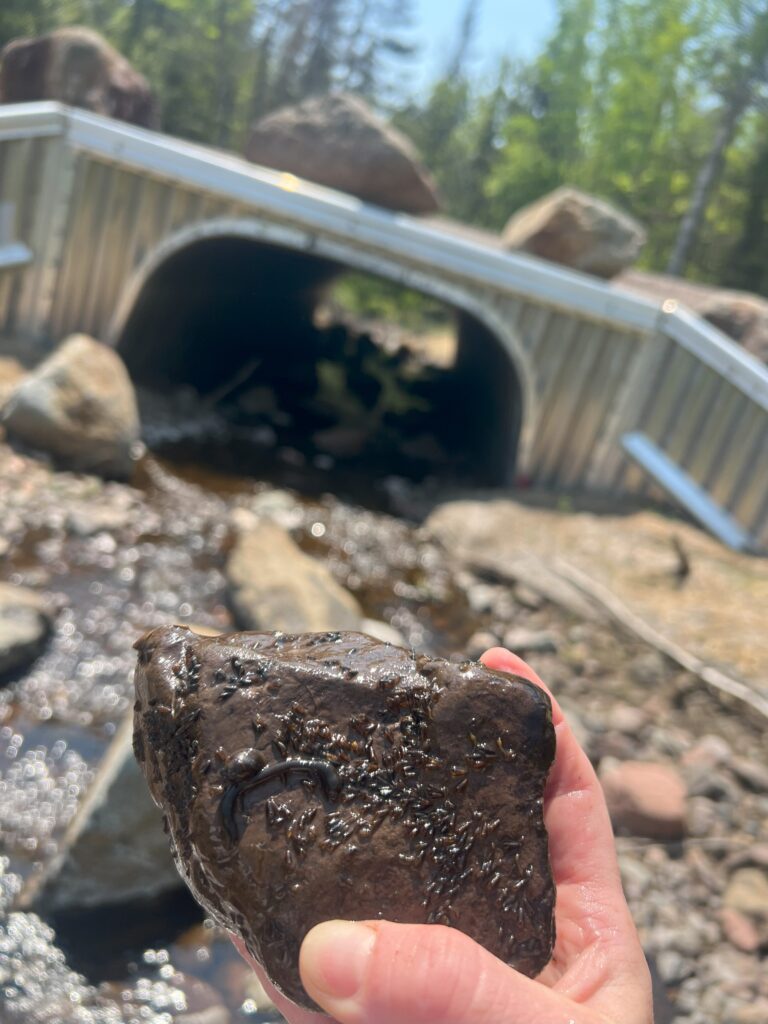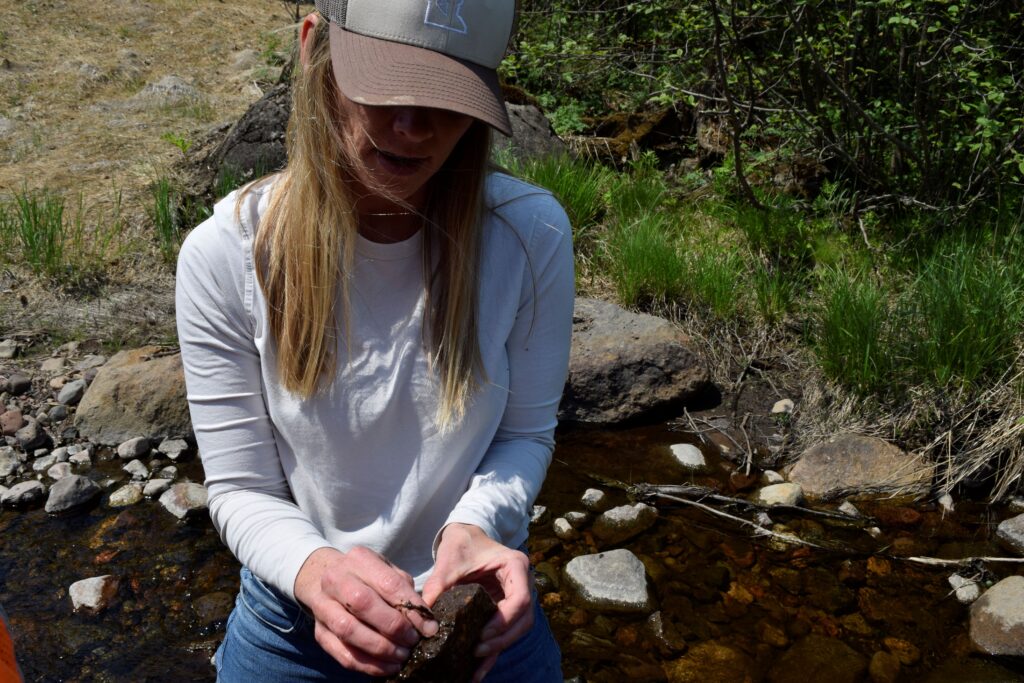MNTU’s barrier removal projects also benefit aquatic invertebrates

When most trout anglers think about culvert replacements, they rightly think of trout passage to critical habitat. Undersized, perched, and crumbling culverts block trout from reaching cold water refuges, spawning grounds, and more habitat. Removing those barriers is a huge benefit to trout fisheries.
But often overlooked is the fact that culvert replacements also help rebuild the larger aquatic food web. Reconnecting stream sections creates better habitat for aquatic macroinvertebrates—the mayflies, caddisflies, stoneflies, and other critters that trout snack on from birth.
Old Culverts = No Room for Bugs
Most older culverts were designed to push water through a pipe as quickly as possible. That means high-velocity flows, no connection to the natural streambed, and very little habitat diversity. For aquatic insects, it’s like trying to live on a slip-n-slide.
Without pools, riffles, woody debris, and streambed material like gravel and cobble, macroinvertebrates can’t establish the complex life cycles that support fish. These bugs aren’t just floating around, they rely on very specific habitat features to cling to, burrow into, or emerge from.
When we replace an old culvert with a geomorphically sized one (that mimics a natural stream channel, reconnects upstream and downstream habitats, and allows for floodplain function) we’re not just making life easier for trout, we are rebuilding their food supply from the gravel up.
More Bugs = Healthier Streams
A well-functioning stream with a natural bottom and good hydrology supports a diverse community of macroinvertebrates. These insects are critical indicators of water quality, and their abundance and diversity tell us a lot about stream health. When we see EPT taxa – Ephemeroptera (mayflies), Plecoptera (stoneflies), and Trichoptera (caddisflies) – making a comeback after a culvert replacement, we know the stream is on the mend.
And for trout the buffet line is reopening. More bugs mean more foraging options, better growth, and healthier fish populations.
MNTU’s Current Culvert Project
MNTU is in the process of removing a barrier on a small, cold tributary of the Baptism River near Finland, Minnesota. The old culvert was undersized, perched, and impassable to fish. It also created a high-velocity bottleneck that scoured the streambed and left little room for aquatic insects to survive.
MNTU’s design team used a geomorphic approach that reconnects upstream habitats, restores natural flow, and reestablishes the kind of stream bed complexity that bugs and trout need. Once in place, this new structure won’t just let fish move through, it will boost food production by allowing fine sediments to settle out, organic matter to accumulate, and riffle-pool sequences to re-form.
Last week we visited one of last year’s culvert projects in the Baptism River watershed and spent some time turning over rocks. We were happy to see a thriving community of caddis, mayflies, midges, and black fly larvae!
One Project, Many Benefits
Minnesota Trout Unlimited understands the connections between land, water, and fish. Projects removing barrier culverts illustrate these connections and how one fix leads to better fish passage, more resilient infrastructure, and a serious boost for stream productivity.
At the end of the day, healthy trout need more than just a place to live. They also need a place to eat.
Want to see these projects in action? Follow along at mntu.org or check out our volunteer events to help us restore fish-friendly, bug-filled streams near you.


